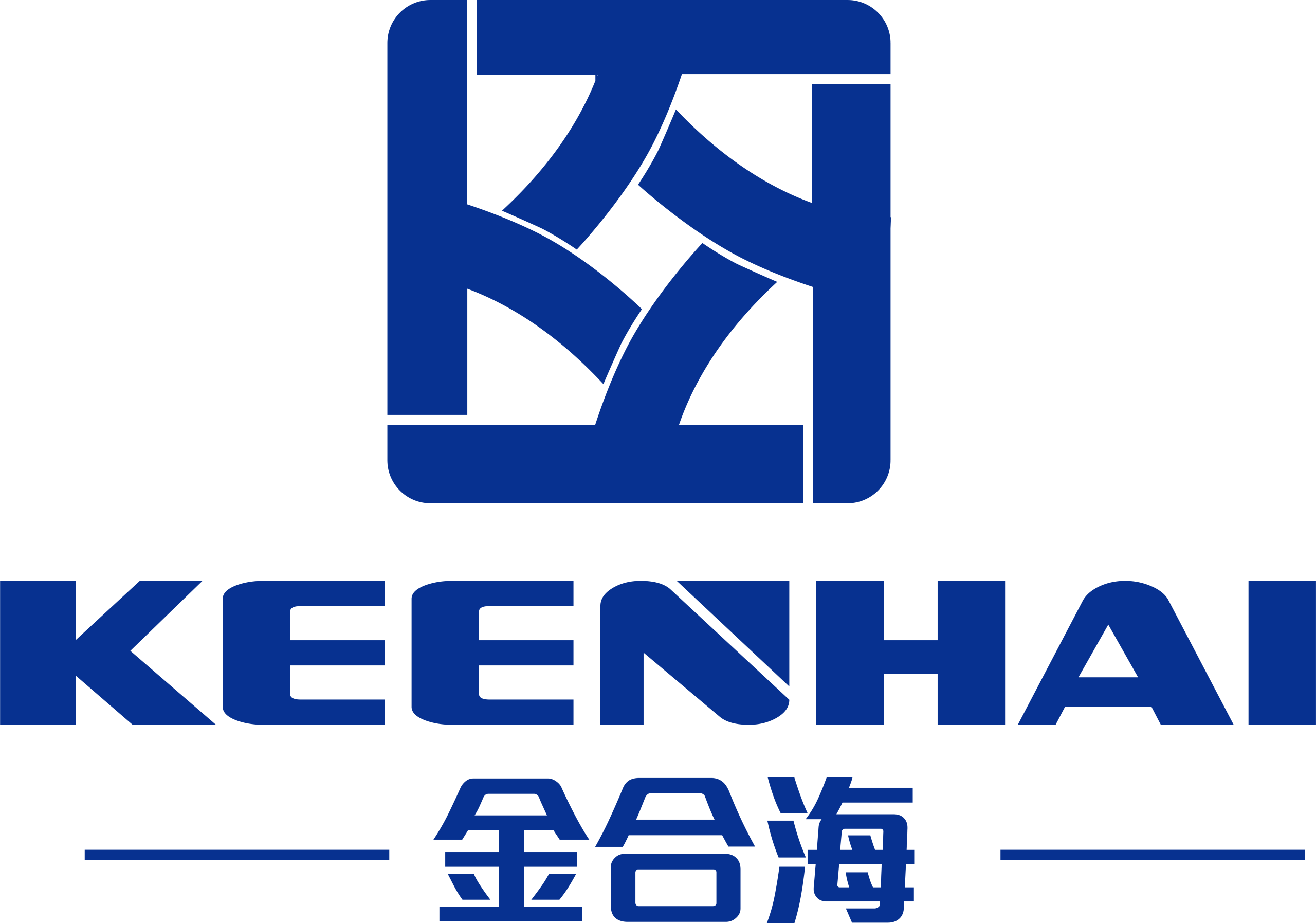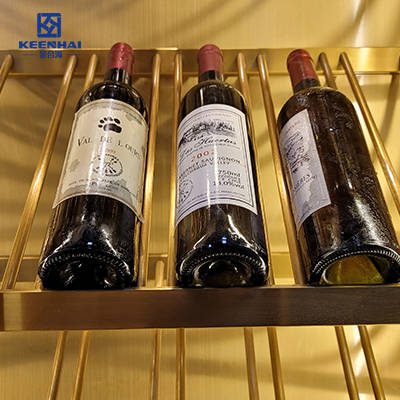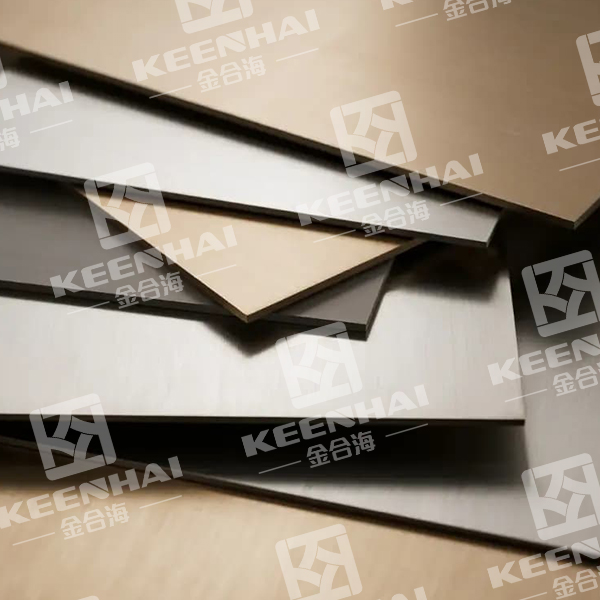The main difference between 304 vs 316 stainless steel lies in corrosion resistance and cost. 304 is ideal for indoor kitchens, appliances, and general use due to its affordability and strength. Нержавеючая сталь 316 contains molybdenum, which significantly enhances durability in marine environments, chemical exposure, or salt-heavy conditions, making it the better long-term investment when corrosion protection is critical.
Chemical Composition Differences
Alloying Elements in 304 Stainless Steel
304 stainless steel stands out as the most commonly used grade because of its balanced mix of iron, chromium, and nickel. The composition typically includes 18–20% chromium і 8–10.5% nickel, which gives it the classic “18/8 stainless” label. Chromium is responsible for the thin but strong oxide film that prevents rusting, while nickel stabilizes the austenitic structure, improving toughness and ductility across a wide temperature range.
When looking at carbon content, 304 stainless steel usually has less than 0.08%, which minimizes carbide precipitation during welding. This makes it an excellent choice for food-grade equipment, kitchen sinks, and household appliances. According to Wikipedia, 304 is classified as an austenitic stainless steel, which explains why it does not become magnetic under normal conditions.
The chemical structure also explains its limits. With no molybdenum present, its chloride resistance is moderate, which means it performs poorly in coastal or marine environments compared to higher grades. Still, the lower alloy content makes 304 significantly cheaper than 316, sometimes 20–30% less in cost per ton depending on market fluctuations.
Additional Molybdenum in 316 Stainless Steel
316 stainless steel builds upon the base composition of 304, but it introduces a critical difference: the presence of 2–3% molybdenum. This single addition dramatically increases resistance to chlorides and acidic environments. Engineers often specify 316 stainless steel in marine applications, chemical plants, and medical devices because molybdenum strengthens the passive oxide layer against pitting and crevice corrosion.
Nickel content is also slightly higher in 316 (10–14%) compared to 304, which helps stabilize the structure under heat and enhances its overall durability. The carbon content remains under 0.08%, keeping weldability on par with 304, but the extra molybdenum makes it a preferred option where longevity and corrosion protection outweigh the higher price tag. According to materials testing data, the pitting resistance equivalent number (PREN) of 316 is typically 24 or higher, while 304 hovers around 18–19, clearly showing the performance gap.
To make the contrast more practical, let’s look at a direct side-by-side comparison:
| Property / Element | 304 Stainless Steel | 316 Stainless Steel |
|---|---|---|
| Chromium (Cr) | 18–20% | 16–18% |
| Nickel (Ni) | 8–10.5% | 10–14% |
| Molybdenum (Mo) | 0% | 2–3% |
| Carbon (C) | ≤0.08% | ≤0.08% |
| Chloride Resistance | Moderate | Excellent |
| Агульныя прыкладанні | Kitchenware, appliances | Marine, chemical, medical gear |
| Relative Cost | Lower (baseline) | ~20–40% higher |
When comparing 304 vs 316 stainless steel, the trade-off is clear. 304 wins on cost efficiency and general-purpose use, while 316 excels in aggressive environments where failure would be far more expensive than the initial material investment. For businesses in sectors like pharmaceuticals or offshore engineering, the premium for 316 is not optional but essential.
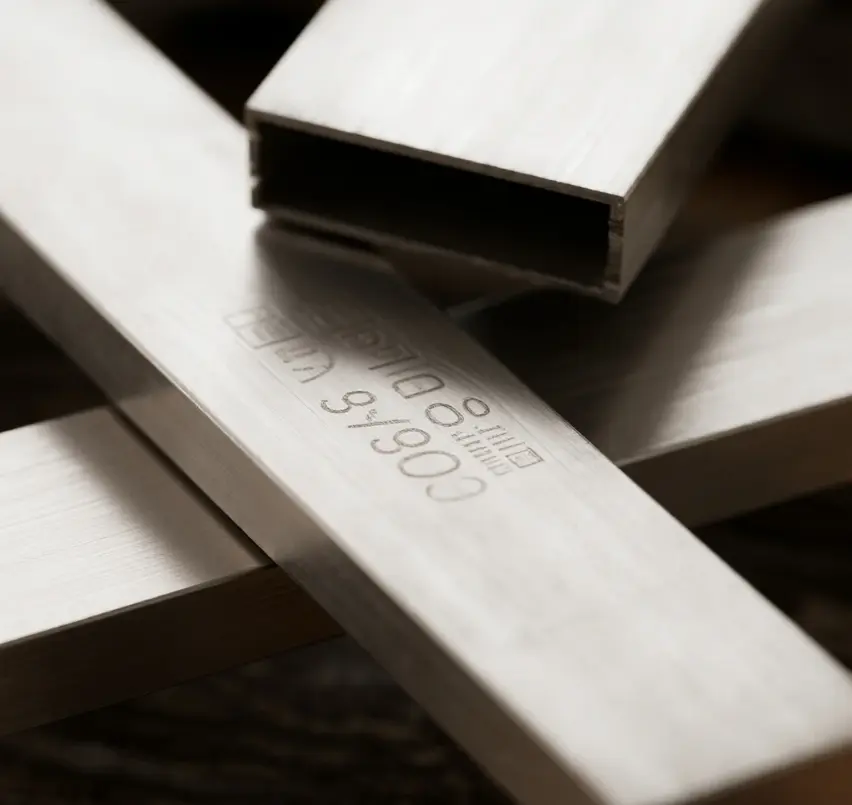
Corrosion and Rust Resistance
Performance of 304 in Mild Environments
Engineers pick 304 when they need clean looks, easy forming, and solid day-to-day corrosion resistance. Kitchens, breweries, and HVAC rooms sit in its sweet spot because chloride levels stay low and cleaning crews wipe surfaces often. When you spec a Ліст з нержавеючай сталі in grade 304, you get 18–20% chromium і 8–10.5% nickel, so the surface forms a tight passive film that shrugs off spills and steam. In municipal water with chloride below ~200 ppm, 304 usually stays bright, and lab data shows critical pitting temperature (CPT) commonly lands around 10–20 °C in 1 M NaCl, which aligns with what shops see near dishwash areas.
Maintenance habits matter. Crews that rinse and dry after caustic cleaners keep that oxide layer healthy and avoid under-deposit attack. Indoor pools change the math, since splash zones push chloride far higher; in those rooms, 304 can pit around fasteners and welds if staff ignore weekly rinses. Regular cleaning wins every time, since oxygen access helps the passive layer rebuild. For background on the underlying chemistry, skim these primers on нержавеючая сталь, карозія, і rust.
Superior Resistance of 316 in Chloride Exposure
Grade 316 raises the bar with 2–3% molybdenum, and that small bump changes real-world results in a big way. Mo improves resistance to pitting corrosion and crevices, so railings, facades, and pump housings near the coast keep their finish longer. PREN—the pitting resistance equivalent number—tells the same story: 304 sits around 18–19, while 316 typically reaches 23–27, thanks to Mo in the PREN formula (Cr + 3.3 Mo + 16 N). Field tests echo this; in splash zones within a few hundred meters of the shoreline, 316 components hold up years longer with the same wash schedule. That gap saves money on replacements and call-outs.
For heavy platework like dock hardware or bracing near brine lines, shops move to a Металічная пласціна з нержавеючай сталі in 316 or 316L to lock in that extra margin. The molybdenum also nudges the CPT to ~20–30 °C in 1 M NaCl, so parts keep their passive film under temperatures and chlorides that would start 304 pitting. When auditors ask for test evidence, many teams reference neutral salt spray tests together with electrochemical pitting scans to document performance.
Key chloride-related metrics (typical ranges):
| Metric (ambient lab conditions) | 304 Stainless | 316 Stainless |
|---|---|---|
| PREN (dimensionless) | 18–19 | 23–27 |
| Critical Pitting Temp (1 M NaCl) | 10–20 °C | 20–30 °C |
| Typical Service Near Coast (with monthly rinse) | 3–7 years before cosmetic pitting | 8–15 years before noticeable pitting |
Quick selection checklist near chlorides:
-
Measure or estimate chloride load: pool decks, de-icing salts, or sea spray often exceed 300–1,000 ppm on surfaces after drying cycles.
-
Map distance to surf and wind exposure: within ≤300 m of shore or on windward faces, move to 316.
-
Set a cleaning plan: schedule weekly fresh-water rinses in splash zones; tighten to daily during peak salt periods.
-
Lock hardware, welds, and edges: specify low-carbon 316L filler, smooth crevices, and round edges so the passive layer stays continuous.
Use 316 when chlorides enter the picture and budgets favor lifespan over short-term savings. In mild indoor spaces with good housekeeping, 304 still delivers strong value and a clean finish without premium alloying.
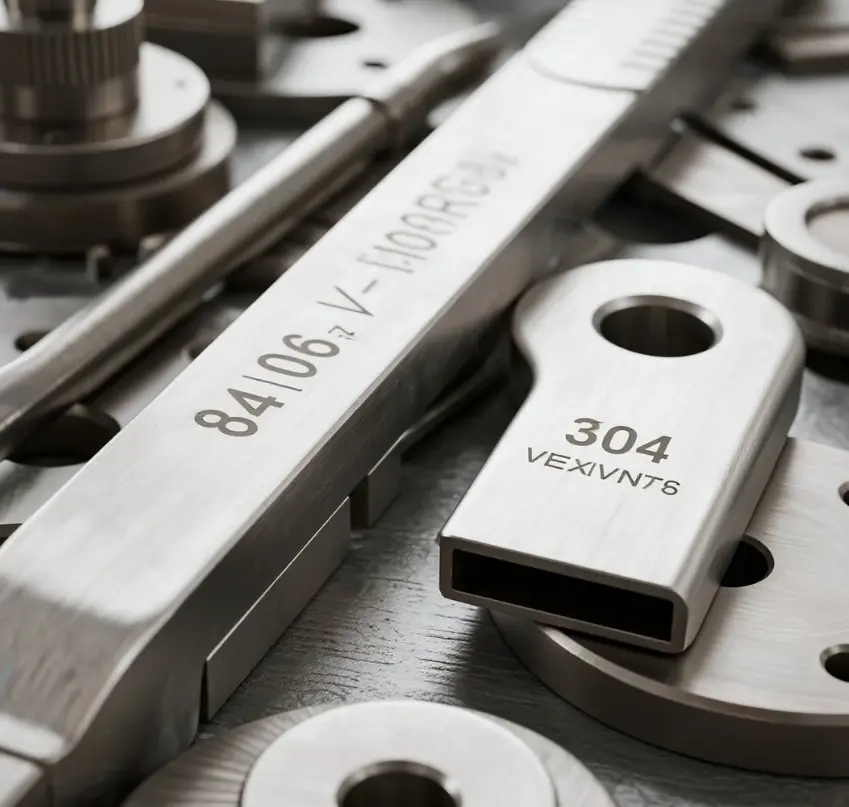
Mechanical and Physical Properties
Tensile Strength and Hardness Comparison
Fabricators often weigh Нержавеючая сталь 304 against Нержавеючая сталь 316 by looking at their mechanical strength. Both grades fall under the austenitic family, so they share many physical traits, yet their alloy tweaks shift the numbers in meaningful ways.
For tensile strength, 304 typically runs 515–620 MPa, while 316 clocks in around 480–620 MPa depending on exact processing. That slight drop at the low end in 316 comes from its added molybdenum, which emphasizes corrosion defense over sheer tensile performance. In practice, this difference rarely limits design since both grades exceed yield requirements for construction fasteners, medical tubing, and Ліставая нержавеючая сталь panels used in cladding.
When you compare hardness, most mill-annealed 304 and 316 land near HRB 70–95 on the Rockwell B scale. Cold working can lift that figure toward 200 HB (Brinell), which fits applications needing dent resistance. Designers note that weld heat can soften local zones, so proper cooling and passivation ensure consistent hardness across joints.
Typical mechanical property ranges (annealed condition):
| Property | 304 Stainless Steel | 316 Stainless Steel |
|---|---|---|
| Tensile Strength (MPa) | 515–620 | 480–620 |
| Yield Strength (MPa) | 205 | 170–290 |
| Rockwell Hardness (HRB) | 70–95 | 70–95 |
| Elongation (%) | 40–60 | 40–60 |
The table shows why material is inox continues to dominate across industries. Both 304 and 316 offer high ductility, which means fabricators can bend, roll, or weld sheets without sudden cracking. That makes them suitable for everything from architectural trims to Ліст з нержавеючай сталі in food-grade tanks.
Heat Resistance and Temperature Tolerance
The differences between 304 and 316 grow sharper when temperature enters the equation. 304 handles continuous service up to 870 °C (1,598 °F) in oxidizing conditions, while 316 typically peaks around 800 °C (1,472 °F) before scaling becomes noticeable. Short-term exposures push both alloys toward 925 °C (1,697 °F), though designers rarely stretch that limit outside controlled furnace applications.
Oxidation scaling sets in faster once moisture and salts mix with heat. In power plants or exhaust systems, this means 316’s molybdenum doesn’t boost its heat resistance much—it shines against chlorides, not dry oxidation. Engineers often choose Металічная пласціна з нержавеючай сталі in 304 for high-temp ducting, then switch to 316 when condensate or seawater spray adds a corrosion angle.
Thermal expansion rates also matter in precision systems. Both alloys expand around 16–17 µm/m·K, which designers account for in flanges and bolts. Thermal conductivity stays low, around 16 W/m·K, compared to carbon steel’s ~50 W/m·K. That low conductivity explains why cookware bottoms often fuse stainless with copper or aluminum cores to spread heat more evenly.
Selection tips for high-temperature service:
-
Use 304 in dry oxidation environments up to 870 °C, such as furnace baffles or catalytic converters.
-
Shift to 316 where chloride-bearing condensate threatens scaling, like marine exhaust risers.
-
Plan for expansion: size gaps or add flexible joints since both grades expand nearly 1.7 mm per 100 mm length over a 100 °C rise.
-
Consider thermal conductivity limits and combine with conductive layers if heat spreading is essential.
Both alloys keep their strength and form at temperatures where carbon steel would scale or warp. The choice hinges less on pure temperature and more on whether the environment mixes in chlorides, moisture, or acids.
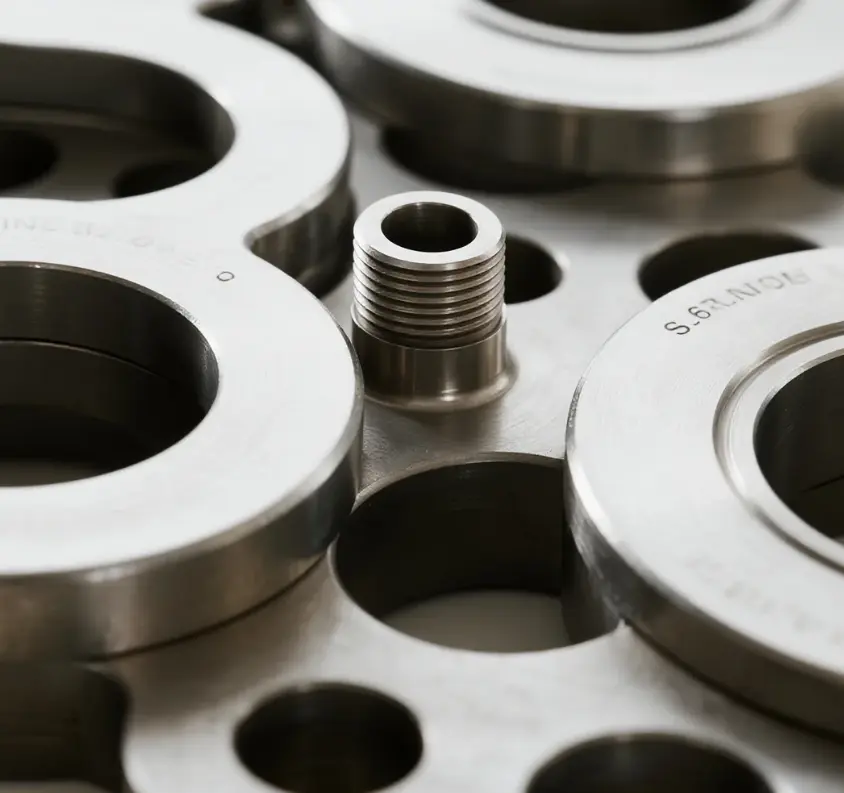
Cost and Lifespan Considerations
Price Range for 304 vs 316 Stainless Steel
When buyers compare Нержавеючая сталь 304 with Нержавеючая сталь 316, the first question usually centers on price. Mills and distributors generally list 304 at a 10%–20% lower cost than 316 for sheets, coils, and Ліст з нержавеючай сталі products. This difference stems from alloying: 316 contains 2%–3% molybdenum, an element trading at high market rates, while 304 does not.
To put that into real numbers, a 304 Steel Sheet Stainless panel may sell for $1.50–$2.00 per pound, whereas 316 can range from $2.00–$2.50 per pound, depending on global nickel and molybdenum prices. Bulk contracts may lower costs slightly, but the gap persists across formats like bar stock, tubes, or Металічная пласціна з нержавеючай сталі.
For project managers working under tight budgets, 304 delivers excellent corrosion resistance for indoor kitchens, brewing tanks, or architectural trims without the premium surcharge. Yet industries exposed to seawater, salt spray, or harsh chemicals often view the higher purchase price of 316 as a worthwhile upfront investment to avoid frequent replacements.
Long-Term Value and Maintenance Needs
The story changes once lifespan and maintenance enter the discussion. Studies from the Nickel Institute show that 304 components in mild urban atmospheres can last 70–80 years with only light surface cleaning, while 316 in similar conditions stretches service life beyond 100 years. That longevity often offsets the higher initial material cost.
Routine upkeep also differs. 304 surfaces in coastal or industrial zones may require quarterly washdowns to remove chlorides that could initiate pitting. In contrast, 316’s added molybdenum gives it a far lower cleaning demand, often limited to semi-annual rinses even in marine harbors. Fewer maintenance cycles translate into reduced labor hours and operating costs, especially when structures span large square footage.
Owners evaluating long-term value should weigh:
-
Purchase cost: 304 is typically cheaper by 10%–20%.
-
Expected lifespan: 304 averages 70–80 years, 316 averages 90–100 years in outdoor exposure.
-
Cleaning frequency: 304 may need 4 cleanings per year in salty air, 316 may need only 2.
-
Replacement cycles: Over a century, 304 may require partial replacements in harsh zones, while 316 often avoids that cost entirely.
The higher initial expense of 316 often pays back over decades through reduced upkeep and longer service life. For projects near coastlines, chemical plants, or pool facilities, the maintenance savings alone can surpass the original material price difference.
Discover the benefits of using PVD stainless steel in elevator doors: What are PVD Stainless Steel Elevator Door Panels?
